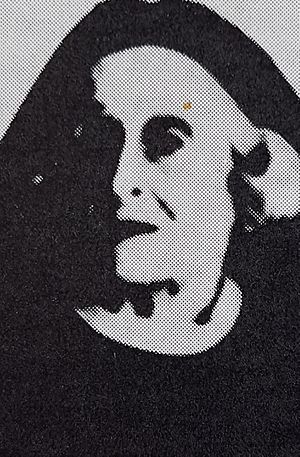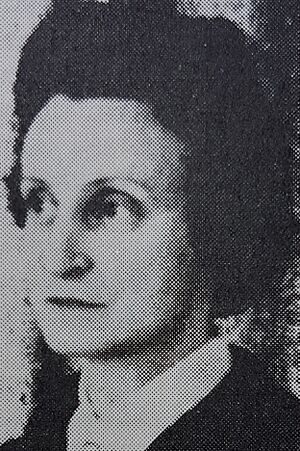Pepi Weixlgärtner-Neutra facts for kids
Quick facts for kids
Josephine Therese Weixlgärtner-Neutra
|
|
|---|---|
 |
|
| Born |
Josephine Therese Neutra
19 January 1886 Vienna, Austria
|
| Died | 1981 Gothenburg, Sweden
|
| Nationality | Austrian-Swedish |
| Other names | Pepi Weixlgärtner-Neutra |
| Occupation | Sculptor and painter |
| Spouse(s) | Arpad Weixlgärtner |
| Children | Elisabeth Söderberg Johannes Weixlgärtner |
| Parents |
|
Josephine Therese Weixlgärtner-Neutra (born in Vienna in 1886 – died in Gothenburg in 1981) was a talented artist. She was known for her amazing work in graphic design, painting, sculpture, and enamel art. People often called her Pepi.
Contents
Pepi's Early Life and Family
Pepi was born in Austria in 1886. Her parents, Samuel Neutra and Elisabeth Glaser, were wealthy factory owners. She was the older sister of Richard Neutra, who became a famous architect in America.
In 1908, Pepi married Arpad Weixlgärtner. He was an important art historian and museum director. They had two children, Elisabeth Söderberg and Johannes Weixlgärtner.
Pepi studied sculpture with Anton Hanak at the Kunstgewerbeschule in Vienna. She also traveled to many countries in Europe to learn more about art.
From Sculptures to Graphic Art
Pepi started her art career as a sculptor. But in the 1920s, she began to focus on graphic art. This means she made prints using special techniques.
She became very well-known for her graphic prints. She used methods like lithography and woodcuts. During the 1920s, she released three popular collections of prints.
While living in Vienna, Pepi showed her art in many exhibitions. She was part of an artist group called Secessionen.
Moving to Sweden
Pepi was active in Vienna until World War II. Sadly, her home was destroyed by fire during the war. She lost all her belongings, including her art plates and printed works.
In 1945, she and her husband moved to Sweden. They were invited by King Gustav VI Adolf of Sweden. Their daughter, Elisabeth, had already moved there in 1939.
In Sweden, Pepi continued to show her art. She had exhibitions in many cities. These included Lund, Malmö, Eskilstuna, Karlstad, Örebro, and Linköping.
In the 1960s, Pepi became interested in color enamel techniques. She worked on projects with her daughter, Elisabeth Söderberg-Weixlgärtner. They even showed their art together at a museum in Frankfurt, Germany.
Pepi also had her own art shows in many places. These included Copenhagen, Oslo, Trondheim, New Orleans, Washington, Los Angeles, Santa Barbara, and Aachen. She also had joint shows with her daughter in Norrköping and Rome.
Where to See Her Art
Pepi's artwork is kept in many museums around the world. Some of these famous places include:
- Moderna Museet in Sweden
- Gothenburg Museum of Art in Sweden
- Malmö Museum in Sweden
- National Gallery of Denmark
- National Gallery of Oslo
- Ateneum in Finland
- Smithsonian American Art Museum in Washington, D.C.
- National Gallery of Art in Washington, D.C.
- Museum of Modern Art in New York
- British Museum in London
- Albertina in Vienna
- Bibliothèque Nationale in Paris
The University of California, Los Angeles also has a special collection of Pepi's work. It includes many of her prints.
Later Years and Legacy
Pepi Weixlgärtner-Neutra was Jewish. Throughout her life, she was known by several names. These included Josephine Therese Neutra, Josefine Neutra, Josephine Weixlgärtner, Pepi Weixlgärtner, and Pepi Neutra.
She passed away in 1981 in Gothenburg, Sweden. Her art continues to be displayed and studied in museums worldwide.


